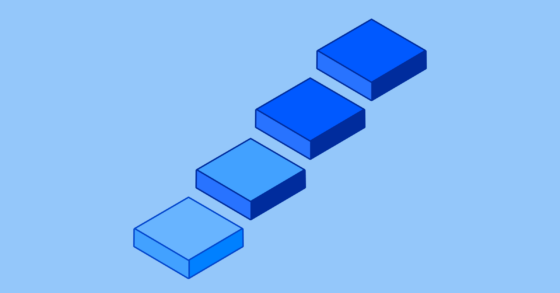VP Product Courtney Machi on why working remotely makes you a better product manager

Written prior to the COVID-19 pandemic, this forward-thinking piece from Courtney Machi, VP Product at Andela, explains how working remotely can make you a better product manager. Find this essay and more in our ebook, The Path to Product Excellence: Stories and Advice From the Field.
In early 2017, I decided to take a fully remote product leadership role at an entirely distributed company of around 350 employees. I had been doing product management in startup-land for a while and had recently finished a few stints of living and working abroad in Europe and South America over the last couple years (both for my employer and for some independent work). The people, ideas, attitudes, lifestyles, and perspectives I experienced had convinced me that there was more out there than what I had come to know so well in San Francisco; and most importantly, that I did NOT, in fact, need to be in San Francisco in order to build amazing, impactful products.
Was I nervous? Absolutely. Product management is difficult enough when you can sit in the same room with your teammates and often, your customers. But, as most of you product people will identify with, I was up for the challenge!
Why I love working remotely
According to Edelman Intelligence, by 2027, the majority of the US workforce will be comprised of freelancers, most of which are typically remote workers. More and more people want to jump on the remote train, and I quickly figured out why. Here’s what I came to love about working remotely:
- As a global, fully remote company, you now have access to talent around the world with a variety of experience and perspectives.
- Building rapport, though a bit more challenging, is fun because you get used to turning on your video camera and embracing your “woke up like this” look.
- Remote workplaces can be true meritocracies because you’re judged by the output of your work, which becomes your top communication medium.
- The additional focus on work and results leads to more focus on data, KPIs, and continuous improvement with less room for noise and distraction.
- Storytelling becomes very important when your communication medium is your work, typically in presentation form; so you dramatically improve in that area.
- You learn to become more disciplined about your work time and routines which leads to a better work/life balance.
Remotely running a successful product journey mapping session
But of course, as I expected, there are also challenges to doing product remotely. Requirements gathering and brainstorms for complex initiatives proved to be difficult. Getting all the stakeholders into a room in the office or at a location somewhere in the world was not really an option anymore (as we are committed to all remote all the time), making things like user journey mapping exercises seem impossible.
So we committed to trying these remotely. I’d never seen these done remotely before, but I figured the worst that could happen was we end up with a Zoom room full of confused people, a jumbled Mural board, and all of us chalking it up to a failed experiment.
Believe it or not, it worked very well.
Here are my tips to running a successful product journey mapping session remotely:
- Identify one unbiased facilitator, usually the PM or the UX designer. When I run these, it’s usually me.
- Get all your participants to commit to 1 hour and 1 hour only. Timebox the session for maximum productivity.
- Prepare your participants beforehand. Tell them what to expect, how to prepare and what they need to contribute, who is facilitating, and send out the Mural or RealTime board you’ll use for the session so they can see it in advance. Treat it like an onsite workshop!
- Do your research beforehand. As the facilitator, ensure you have a basic understanding of the flow/process so you can ask the right questions and prompt for issues/opportunities. Make sure the board is set up with all the basic steps in the user journey.
- Though you’ll be sharing your screen and updating the board with stickies as you progress through the user journey, make sure you have another person designated as note-taker to capture anything you might have missed. Record the session too.
We’ve embedded this into our product process, and I now feel it works better than it did when I was onsite at an office, simply because it made us more disciplined and efficient. It’s also a fun opportunity to get everyone together in one virtual “room” as a workshop of sorts, something that we don’t get to do too often in a remote company.
Becoming a better product leader
While being remote may require more work upfront from PMs, ultimately it provides the opportunity to become a more well-rounded product leader.
Recognizing and overcoming the challenges associated with remote product management only leads you to hone your skills and zero in on weaknesses that you may have had in past onsite positions. For example, I sometimes did not do enough preparation for workshops in the past simply because “we have the whole day” for the workshop or because “we will figure it out when we get in the room together and can whiteboard it out.” There’s also a whole lot of potential for finding better work/life balance, picking up new and unique perspectives, and discovering innovative ways to build products by way of overcoming remote challenges.





